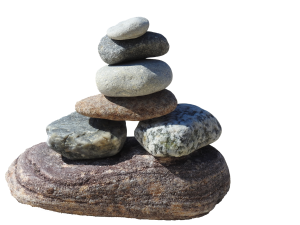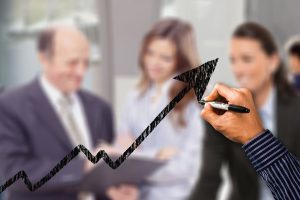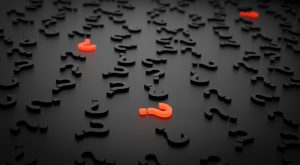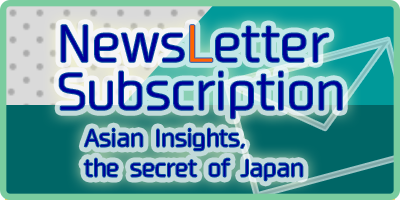It was around 2008, just after Lehman brothers’ clash, Mr. Inamori*, the legendary Japanese entrepreneur spoke something about the preventive measure to the recession and measures to be implemented to overcome the current recession.
For this time, I would like to share what is the most effective preventive measure against the unexpected recession and measurements to survive the recession.
First of all, let me write about the preventive action.
Q: What is the preventive strategy for Mr. Inamori to stress for top business leaders in Seiwajuku workshop?
A: Profitability. Mr. Inamori has reiterated top managements to deliver at least ten percent of the net profit, before interest and tax.

Q: Why did he put such benchmark of ten percent?
A: 1 Pushing people harder to achieve high goal. 2 get themselves prepared for unexpected recession, as we are now under COVID-19 pandemic.
Q: In Kyocera case, what happened during the previous recession?
A: Kyocera also suffered the serious recession around the oil shock (1974). The number of orders decreased day by day at the time of the first oil shock, and there was nothing to make. Kyocera’s order just before the oil-shock was 2.7 billion JPY a month, but it fell to just under 300 million yen in the same year. It was a very sharp reduction in orders. The production volume, which was 2.6 billion yen, had plummeted to 900 million yen in 8 months.

Q: What did most of major manufacturing companies do to survive such recession?
A: In such a terrible recession, large companies were forced to shut down one after another, either dismissing employees or keeping them at home.
Q: On other hand, what did Kyocera do for that recession?
A: In such a situation, Kyocera had neither fired nor laid off, nor had them stay at home. During the recession, Kyocera had kept sufficient profits while protecting the employment.
As we had already had a highly profitable business model, we were able to accumulate sufficient retained earnings and our capital. Higher profitability has always been the first preparation for a recession. Furthermore, Kyocera was remarkably able to generate profit even under the recession.”
Q: Why was Kyocera able to continue to make a profit without dismissing , even though it had such a reduction in production and orders?
A: Inamori says the importance of retained earnings.
Q: If you increase your capital, the return of your capital (equity ) may be decreasing?
A: Yes it may be. The ROE is gradually decreasing.

Q: Have shareholders ever complained such strategies and financial status?
A: Yes they have.
“Kyocera’s management always holds an investment briefing session in the United States and Europe. Those investors asked Kyocera, “Kyocera has a very high equity ratio. Therefore, ROE (return on equity) is low. How come you want to save money so much? We should use it for various things such as investing. That is our investors’ desire. Please consider it. “
Kyocera’s management came to me to have my words. I told him, ” You should ignore such investors. For us, who have to run a company for decades, stability is more important than anything else. It has enough preparations to withstand a hard recession. Tell them, “We have to protect the company, including our employees, and if you don’t understand it, you are not the investors who we are looking for, “that’ it.” Mr. Inamori encouraged top managements under Kyocera group.
Q: Thus, has Mr. Inamori reiterated to be a highly profitable company to realize the company’s long term stability, hasn’t he?
A: Yes he has, if you enter into a recession with little profit and little reserves, the company is highly likely to bankrupt. The president has always been worried and could not even sleep. Therefore, we, as top leaders, to work hard to deliver the minimum 10% profit.

Q: How about Japan now? Do many people get prepared themselves?
A: Unfortunately they don’t. Due to this COVID-19 recession, the bankruptcy of hotels has appeared one after another. The hotel operators seem to have cash reserves for a couple of months, maximum 6 months. If I were the top management of those hotel companies, I would be really worried if I have to pay a lot of fix cost, while managing capital investments. Until January in 2020, people enjoyed high profit realized by inbound policies. Most of Okinawan companies heavily relied on inbound demand. I wonder why they didn’t make sufficient reserves around that time.
Q: So what is the lessons learned from this COVID pandemic?
A: There cannot be a boom that surely lasts forever. The history has always told us.
Q: So how much retained earnings should be saved?
A: Mr. Inamori referred the example when Kyocera entered the telecommunications business. In Kyocera, there seemed to be around 500 billion yen internal reserve and Mr. Inamori asked other officers to use about one-third of this amount, 150 billion yen.

In case, this telecommunications business fails, there should be more than two-thirds of the remaining internal reserves. That’s why he convinced other officers to enter into this telecommunications business.
Q: So, if he had failed that telecommunication business, do you think Kyocera itself had sufficient reserve for them to get recovered?
A: For Mr. Inamori, one third was very important threshold. What if the recession comes when their new business got considerable amount of loss. I feel Mr. Inamori probably asked to himself many times and simulated hundreds of times, I guess.
Q: But Kyocera finally started that new business, didn’t they?
A: Yes they did. One of the Kyocera Philosophies says to be optimistic in envisaging, to plan pessimistically, and to execute optimistically.I think Mr. Inamori had all three roles in his mind. I think he was always simulating and thinking about what he could do if the worst case happened.
Q: Do you think it is a Japanese mindset? Over cautiously in planning and conducting?
A: Sometimes yes. Last year, I had an opportunity to visit the Sumitomo Museum in Kyoto. Adjacent to the museum, Sumitomo Villa with a large garden appeared. It seems that the presidents of Sumitomo Group companies actually get together every year on the ball rooms in that Villa.
At that time, there are some events to be held. One is that they visit the graves of those who have passed away in the Sumitomo Group’s business and dedicate their prayers. The other one is to cross the copper bridge. Copper making was a principle industry that was developed under the Sumitomo Group. It seems that by crossing that bridge they should carefully check the speculative strategies and ask themselves to take the safer sides or not. Certainly, otherwise it may not be a company that has been prosperous for hundreds of years.

Q: So do you think that the key to become a highly profitable company is to keep always cautious?
A: The recession comes in a cycle of every 10 to 20 years. When a recession first comes, people describe such changes to be unpredictable. If we can’t predict, all we can do is getting always prepared. We may have to be prepared for all the possible triggers to cause the recession.
Q: What do you think under the current COVID 19 recession?
A: Obvious rainbow swans we have seen. For instance, most of the deficit, we use the government reserves, tax revenues. There is no magical fund in the world. Therefore, sooner or later, the industries which have heavily relied on government services would be suffer as the government cut their budget in many directions. Constructions, infrastructure service providers may suffer in the next stage of recession. Bankruptcy and M&A would be seen in a natural consequence.

Q: To sum up, what we should do for the recession following the COVID?
A: People understand that it is during the bullish economy to pile up the reserve and get ourselves to be well prepared for the recession.
Should you have more queries, opinions, doubts, please email to ytomizuka@abrilsjp.com
Further queries or doubts, please email to ytomizuka@abrilsjp.com
News Letter subscription is here







